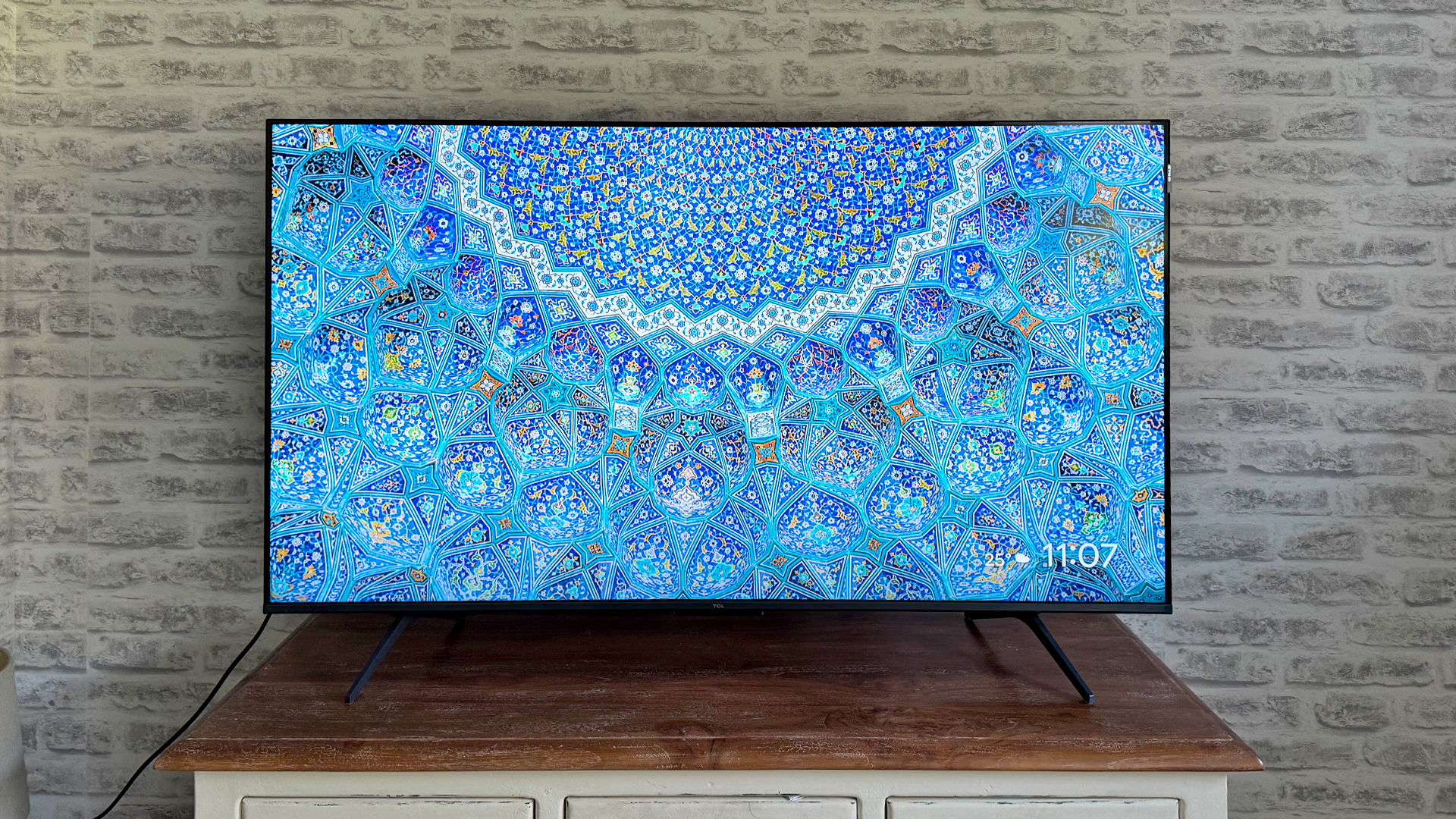What Hi-Fi? Verdict
The Photon Go’s battery-powered UST design makes it unique, but it is let down by a sub-par picture performance
Pros
- +
Balanced sound
- +
Light and compact design
- +
Solid features
Cons
- -
Flat picture
- -
Slight lattice effect
- -
Lower battery life than expected
Why you can trust What Hi-Fi?
The Optoma Photon Go is a different beast to anything we have had in our test rooms before.
Yes, we’ve tested ultra-short throw projectors before and portable projectors aplenty, but never a portable UST projector, which is what this is.
With a range of set-up features to ease the faff of keystone correction as well as a light design and an integrated smart platform, the Photon Go is a great proposition on paper.
There are, however, some niggling issues.
Price
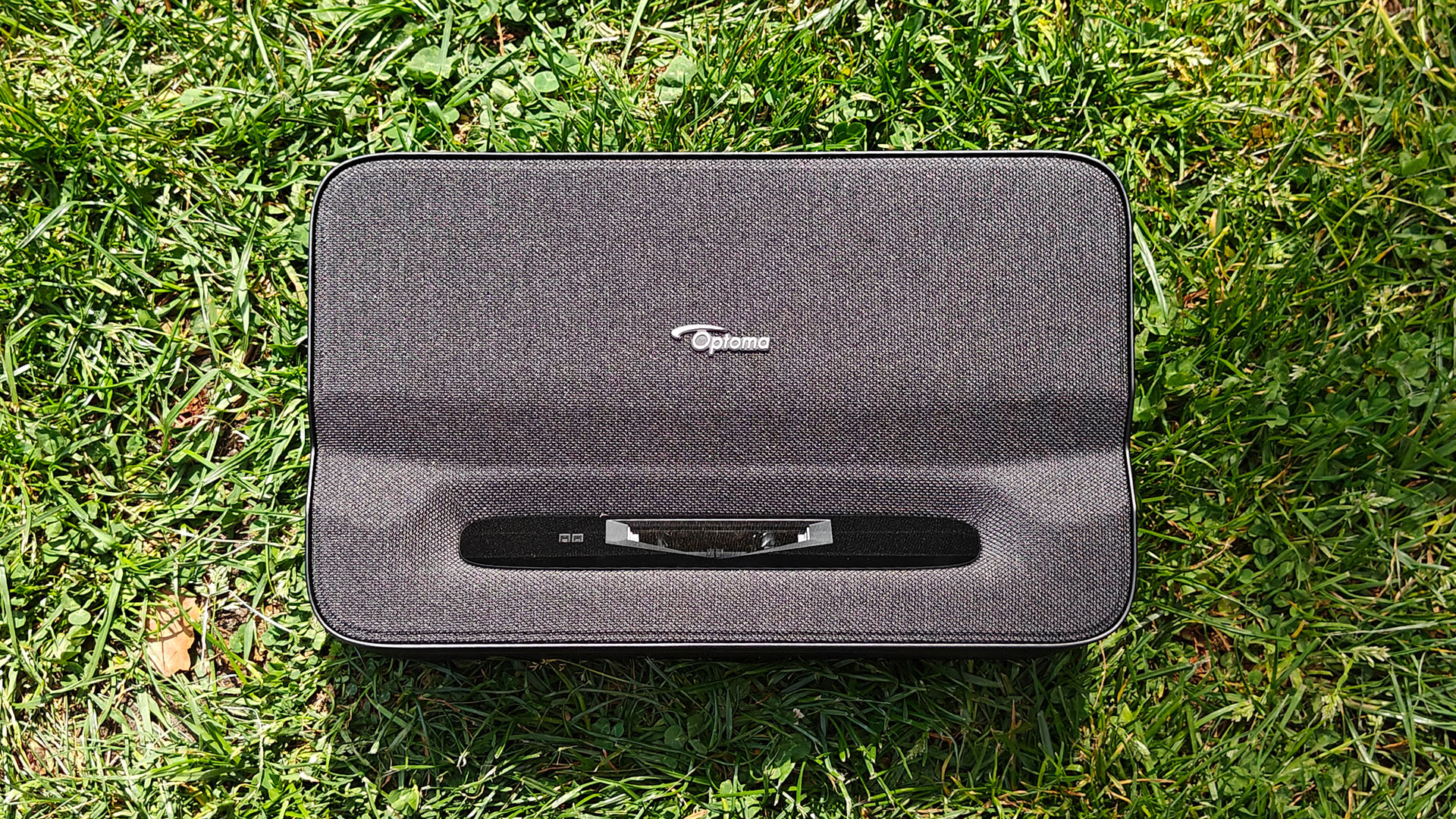
The Optoma Photon Go is available for £899, and because it’s a unique product, there aren’t any true direct competitors.
However, we feel that someone considering it will most likely be focusing on the portability first and the ultra-short throw design second.
In that case, they will also be considering more typical portable projectors, such as the Anker Nebula Mars 3 Air, which is one of the best portable projectors we have tested and is officially priced at £550 / $600 / AU$1300.
The latest hi-fi, home cinema and tech news, reviews, buying advice and deals, direct to your inbox.
We like the Anker’s overall picture and sound quality, as well as its simple design, which makes it easy to carry around.
If someone is actually focused on the UST element first and foremost, finding an alternative to the Optoma means stretching the budget significantly. The Hisense PL1 is one of the cheapest available, but it costs £1999 / $2500 / AU$2995.
Its performance is superb, but it’s designed for permanent placement in your living room and is far from portable.
The Optoma is positioned somewhere between these two markets – a UST that you can take on the go to watch films or TV easily.
Design
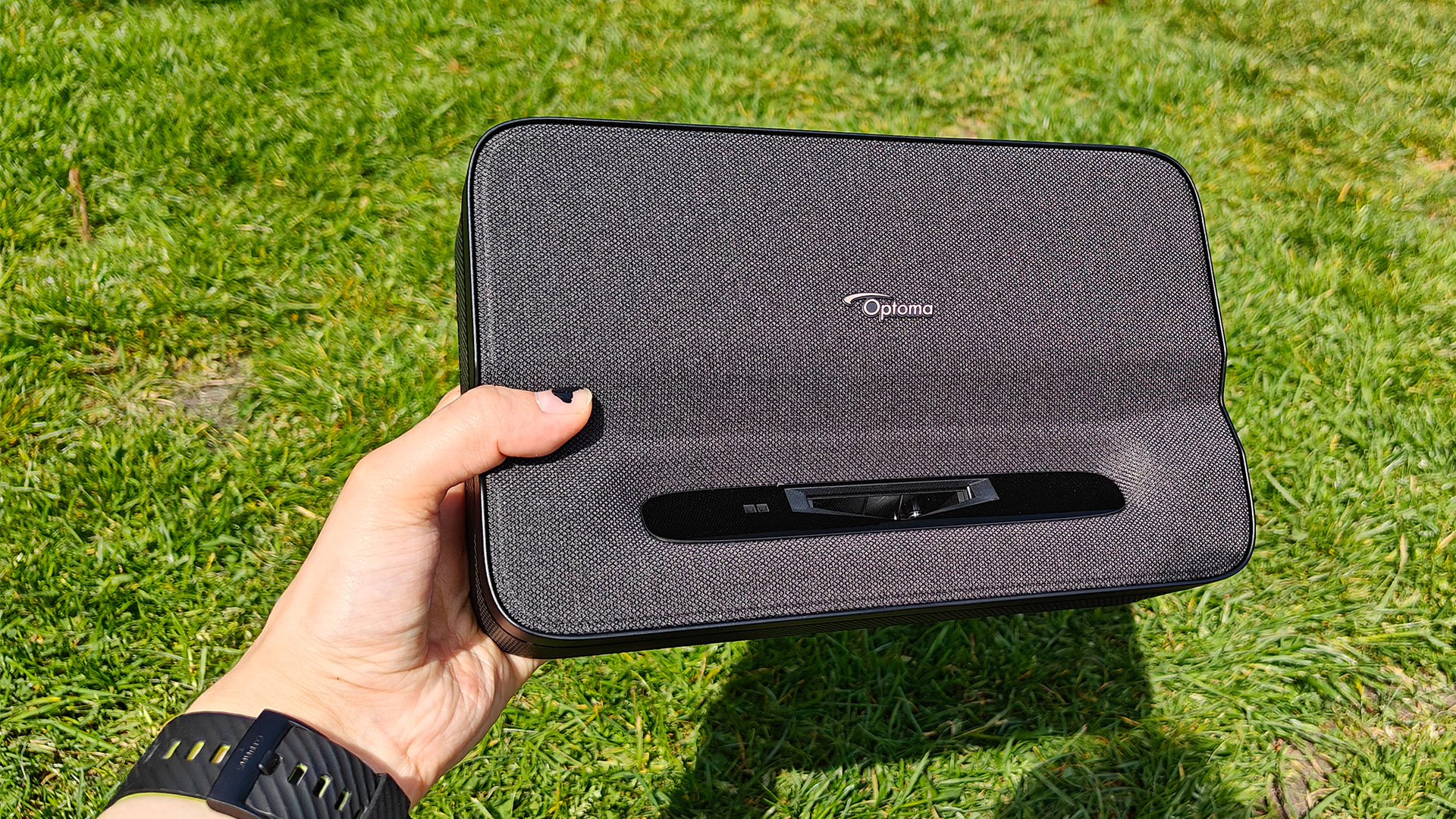
If it’s meant to be portable, it’s got to be light. The Optoma Photon Go ticks this box, weighing in at a neat 1.72kg. It is about the size of a lunchbox, which makes it easy to pop into a tote bag or rucksack.
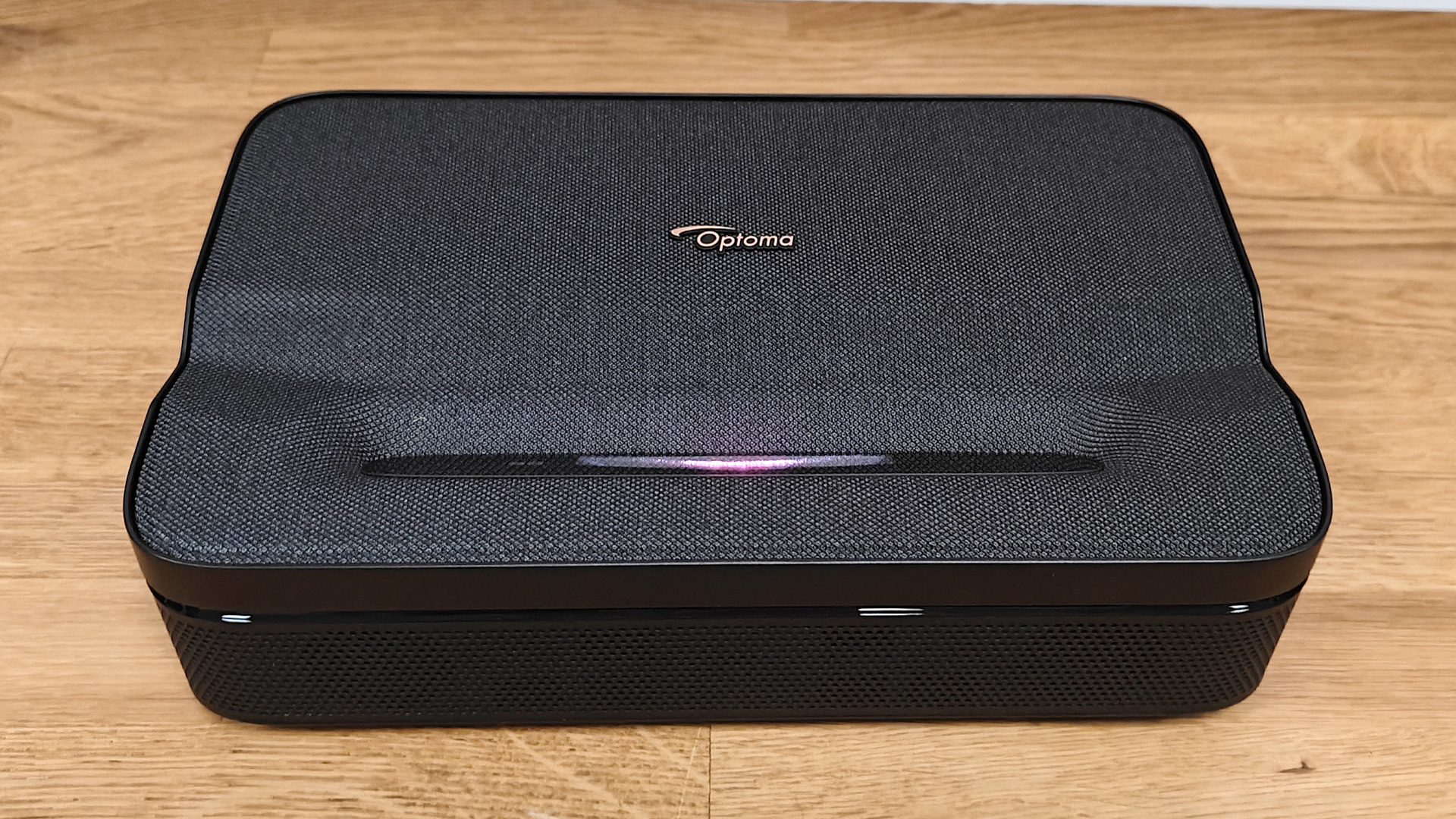
Projector type Triple RGB Laser
Screen size 60 to 100 inches (claimed)
Native resolution 1080p
Input lag 27ms
HDR support HDR10, HLG
Dimensions (hwd) 6.2 x 25 x 16cm
Weight 1.7kg
The top has a sturdy fabric cover that gives it an expensive look, with the rest of the body sporting a black plastic design.
On its bottom are four feet to steady the projector on surfaces. Around the back, the connectivity options are kept simple, but they include an HDMI input so you can connect a Blu-ray player, games console or streamer.
The lens is buried in a divot on the projector’s top, keeping it fairly secure from being bashed about on your travels.
The remote control is light, features useful shortcut buttons to some streaming services, and benefits from intuitive button placement, which is essential as you’ll probably often be using the projector in the dark.
Features
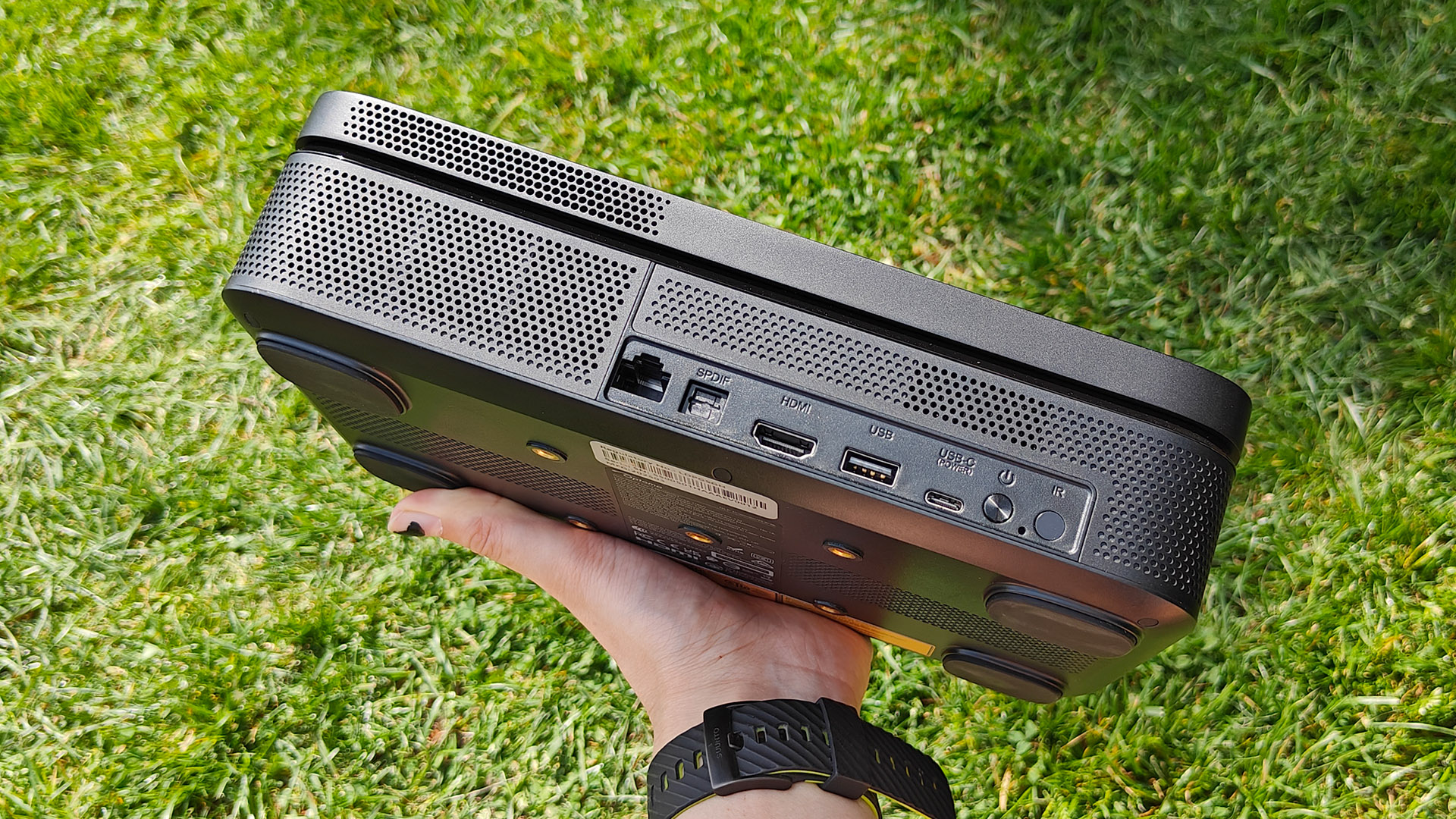
Inside the Optoma Photon Go’s portable body is a triple RGB laser system capable of delivering a claimed 650 ANSI lumens of brightness.
Optoma also claims the projector can reproduce 150 per cent of the DCI-P3 colour spectrum. The resolution is 1080p, and HDR support comes in the form of HLG and HDR10.
So, there’s no 4K here, and the brightness figure is a long way short of more premium projectors, but this claim is pretty decent for its price range and portable nature.
The Optoma Photon Go offers a claimed maximum battery life of one and a half hours when used for video. This will differ based on what setting you have the projector on for both sound and picture. One and a half hours won’t get you through a football match or a typical modern movie, so it’s a pretty disappointing figure.
You can, however, bring along a battery pack to charge the projector when you are out and about. Even so, you would hope a portable model would allow a longer viewing time. The Anker Nebula Mars Air, by comparison, can last a maximum two and a half hours.
The Photon Go can project an image 100 inches in size from just 25cm from the wall. There is a range of robust image positioning features that make set-up relatively easy, including auto-keystone and focus correction. It also has a zoom feature, which a lot of USTs fail to include. While the projector does not always get it right, tweaking the settings manually is pretty fuss-free.
In terms of streaming, the projector is powered by Google TV and comes with Netflix built in. You can also add other apps such as Apple TV+, Amazon Prime Video, Youtube and Channel 4. It’s worth noting, however, that there is no BBC iPlayer app to be seen. Optoma hasn’t replied to our request for clarification on this.
One workaround for the absence of iPlayer is to use Google Cast, where you can stream videos from your phone or laptop to the projector. While it would be better in terms of picture quality to use a local native app, at least there is a way to access the streaming service.
Picture
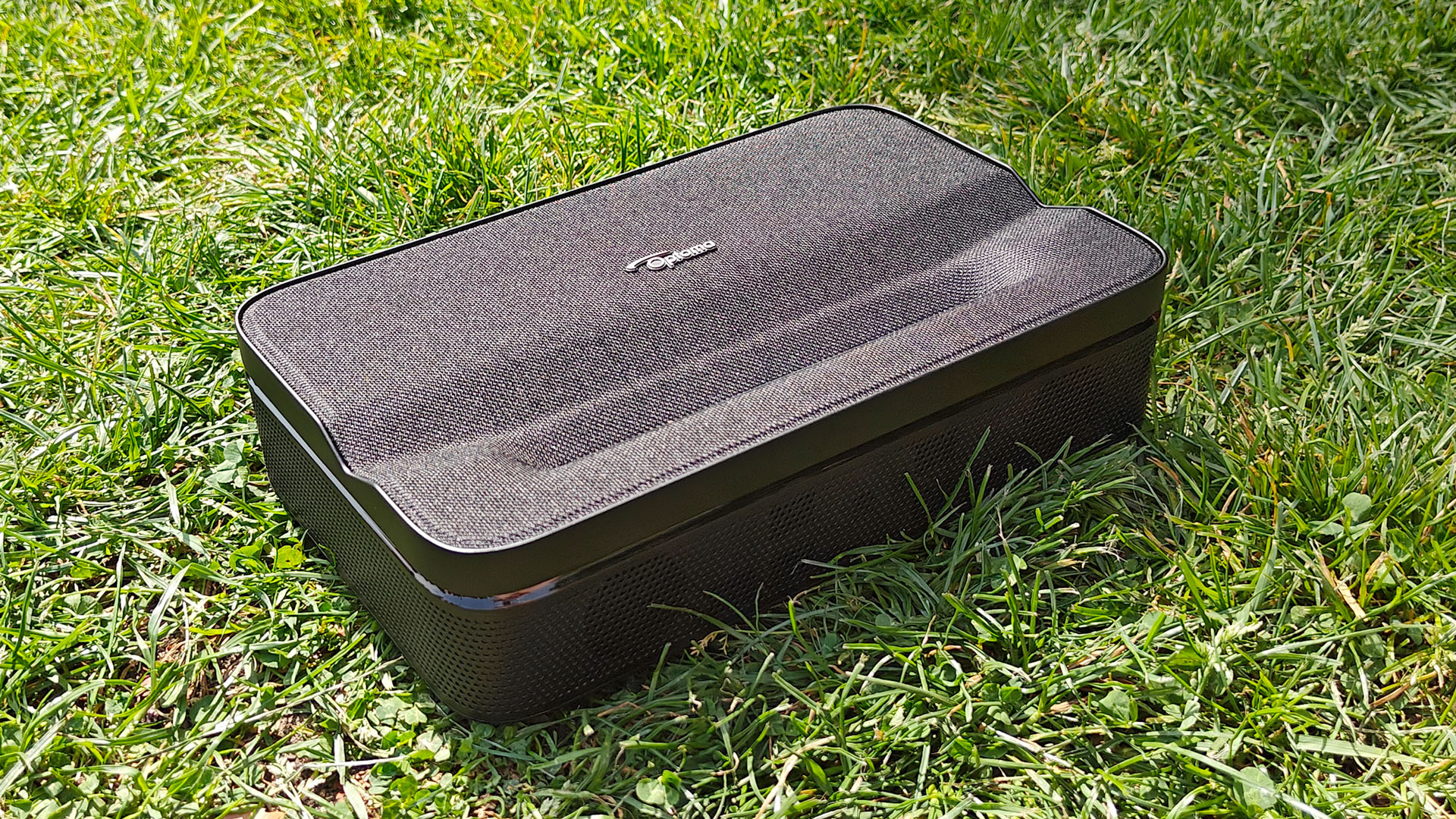
We begin our testing by watching Conclave on Amazon Prime Video, as we can’t see many people lugging a Blu-ray player outside to use the projector.
When Ralph Fiennes’ Cardinal Lawrence first enters his private bedroom, his bright red hat (or ‘zucchetto’) is distinct compared to the dark background behind him. The projector does not overdo the brightness either, as much of the detail on his robes is visible.
The Optoma Photon Go also achieves a reasonably rich level of blackness compared to the dark grey that many projectors can fall victim to.
As Cardinal Lawrence moves further into the room towards a lampshade, the projector manages to capture the graduated brightness of the lamp instead of just a block of light.
Compared with other portable projectors around this price range, however, the Photon Go does not manage to convey nearly the level of vibrancy and detail we have come to expect.
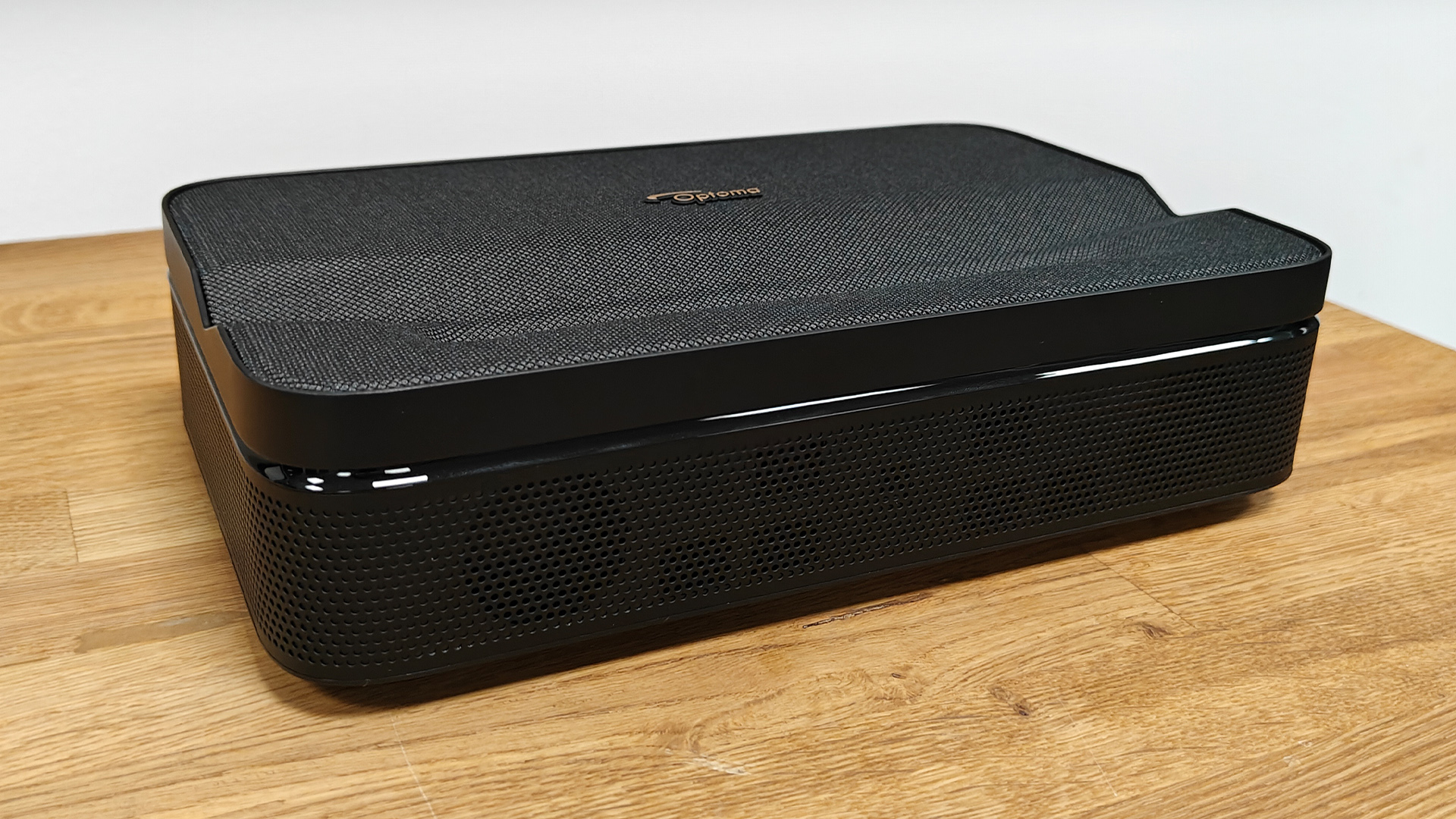
Switching to Barbie on 4K Blu-ray, the usually bright colours seem dull and flat, which makes the colourful sets and costumes much less interesting to look at. As Margot Robbie’s eponymous character walks up to Weird Barbie’s home, the almost neon pink looks closer to a salmon shade.
We also notice a slight lattice effect across the whole screen, which gives the image a low-resolution feel, with text slightly pixelated and shapes lacking refinement.
When watching the North American episode of Seven Worlds, One Planet on Blu-ray, the natural textures feel muddy. Compared with the best portable projectors around, the Photon Go falls short of capturing the subtle detail of a black bear’s fur as it makes its way through the forest.
As this projector is meant to be ideal for outdoor movie nights, we test it out in light conditions too. While the image is still visible, it loses even more vibrancy and becomes much less engaging.
Sound
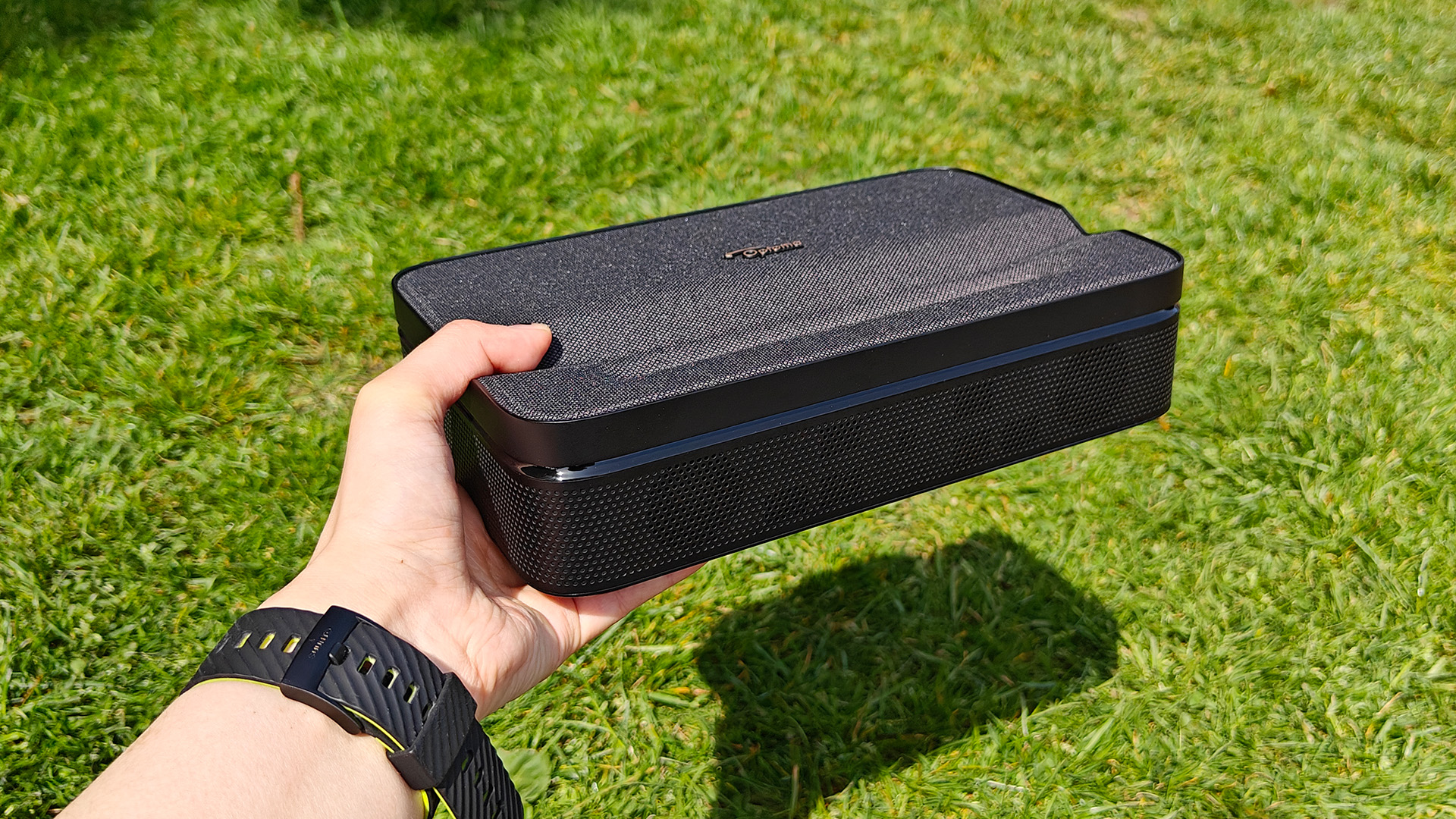
Overall, the Optoma Photon Go succeeds in delivering a relatively balanced and emotive sound.
With Seven Worlds, One Planet, the swelling orchestral soundtrack is impressively nuanced for the two modest built-in 10W speakers. David Attenborough’s narration is clear too, striking a good balance between naturalism and emotion.
The volume does not go particularly high, though, and we find there’s not much of a difference between 70 and 100 on the controls.
This means the overall experience does feel a bit lacklustre, especially as the lower frequencies do not manage to pack much of a punch. It’s also a bit of a problem when using the projector in a large room or outside, where the sound can easily get lost.
With the projector’s Bluetooth abilities, you do at least have the option of adding a wireless speaker or soundbar to the mix to boost the sound.
Verdict
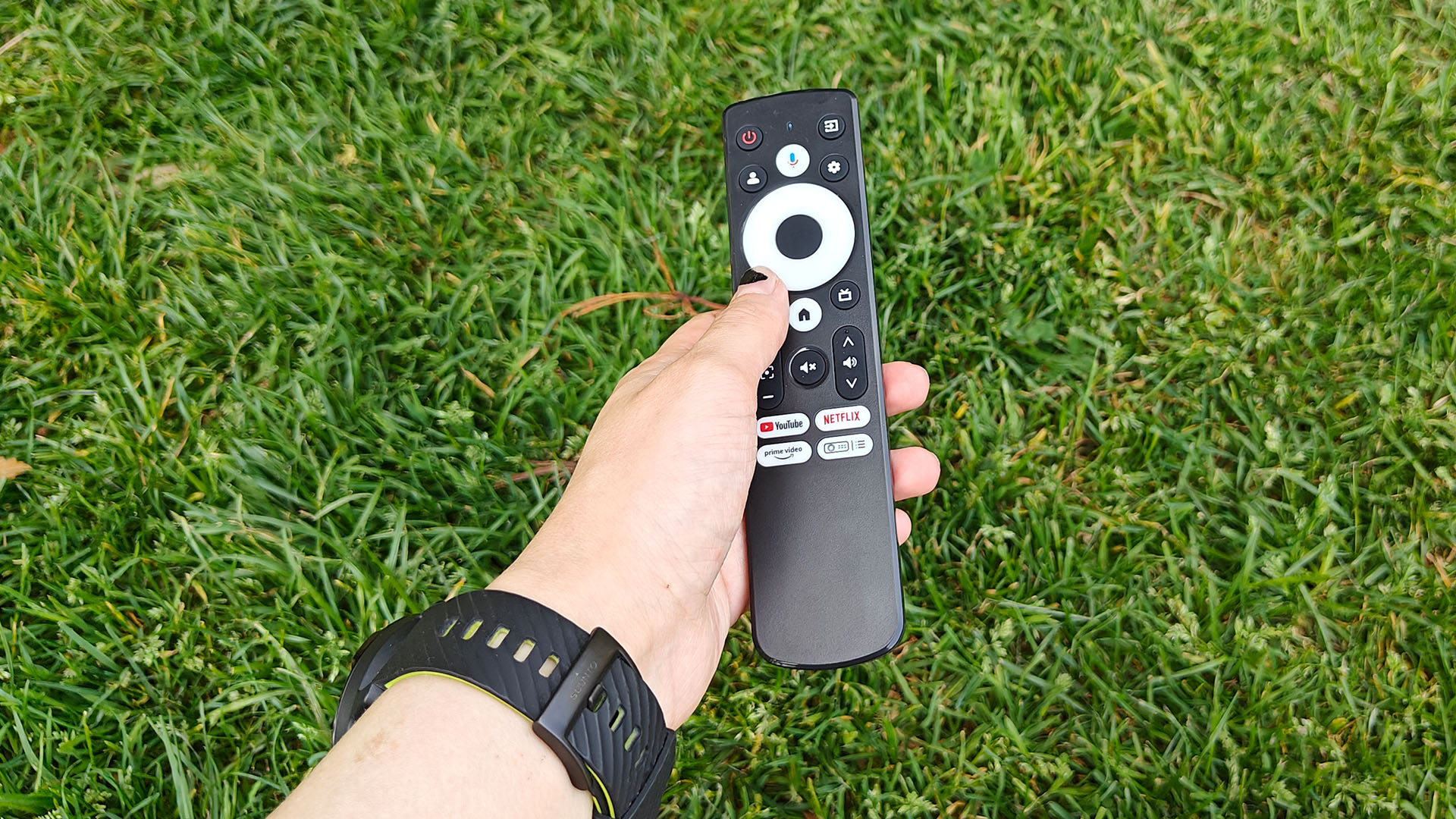
The Optoma Photon Go is an interesting and unique portable UST that ticks a lot of boxes from a design perspective.
Its picture lacks the clarity and vibrancy of the best portable projectors and the battery life is disappointing, but the Photon Go is still reasonably watchable, relatively easy to set up and offers a fairly balanced audio delivery.
If having a UST with such a design is important to you, this model is pretty much your only option.
But, for those on the search for a portable projector with a more refined image, there are better options at this price point, and lower.
SCORES
- Picture 3
- Sound 4
- Features 4
MORE:
Read our review of the Anker Nebula Mars 3 Air
Also consider the BenQ GV31
Read our Epson EF-12
Best projectors: budget, 4K and ultra-short-throw
Robyn Quick is a Staff Writer for What Hi Fi?. After graduating from Cardiff University with a postgraduate degree in magazine journalism, they have worked for a variety of film and culture publications. In their spare time, Robyn can be found playing board games too competitively, going on cinema trips and learning muay thai.
- Lewis EmpsonSenior Staff Writer
- Tom Parsons
You must confirm your public display name before commenting
Please logout and then login again, you will then be prompted to enter your display name.


